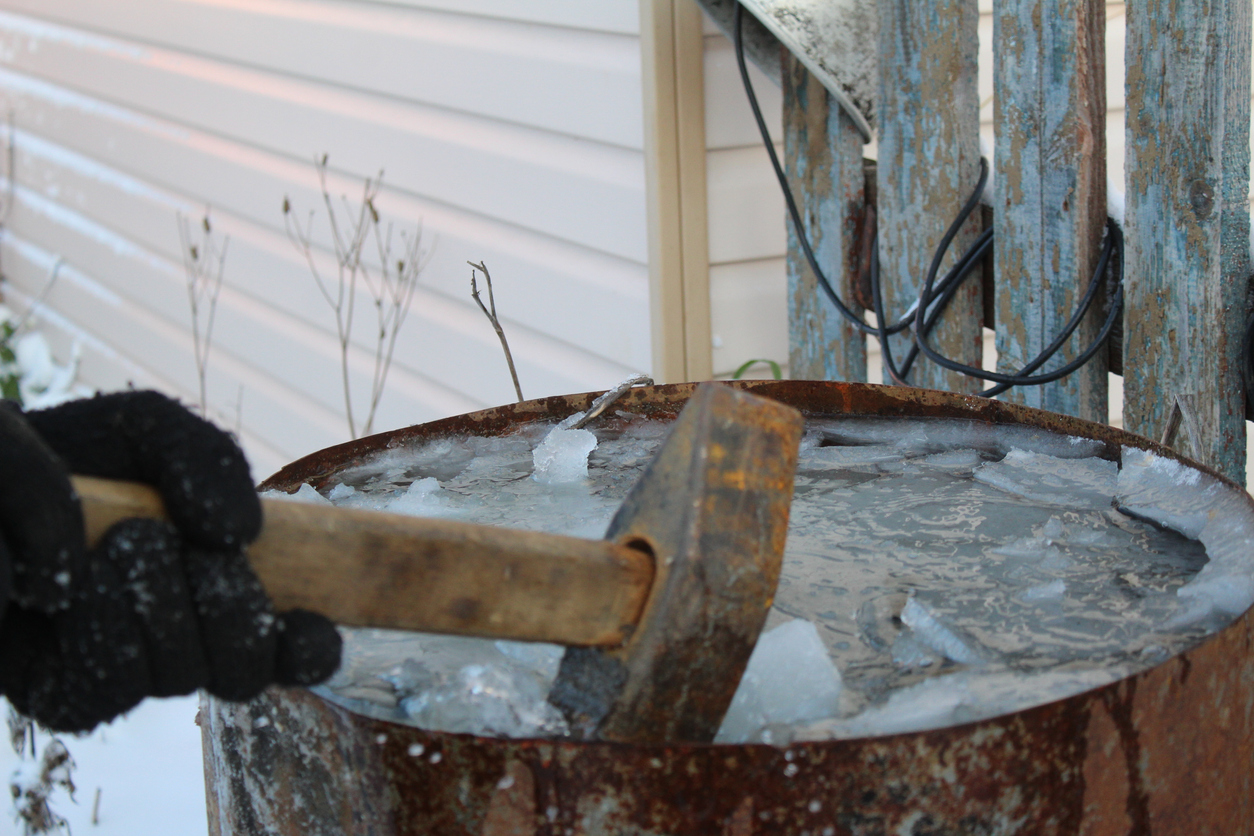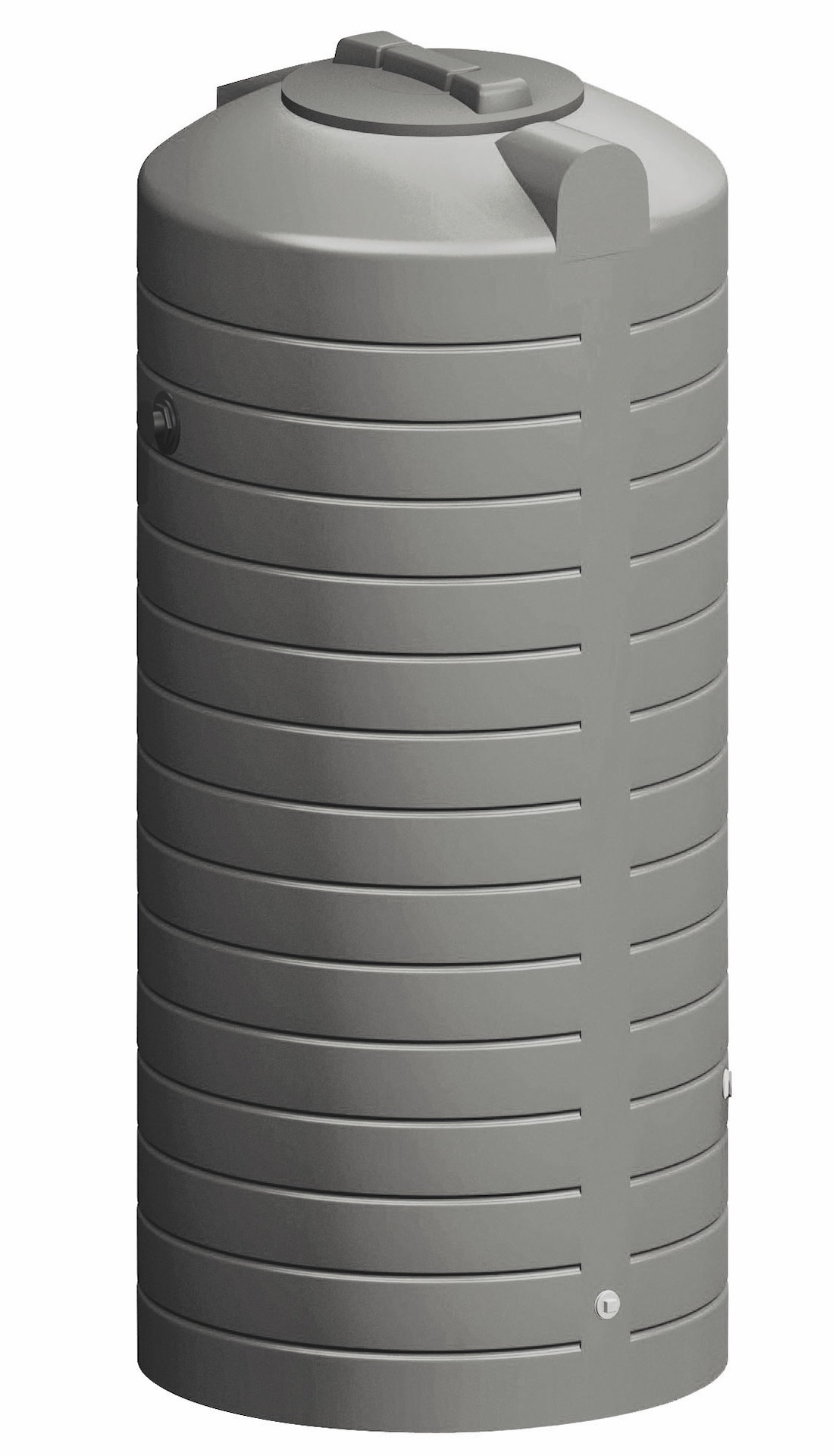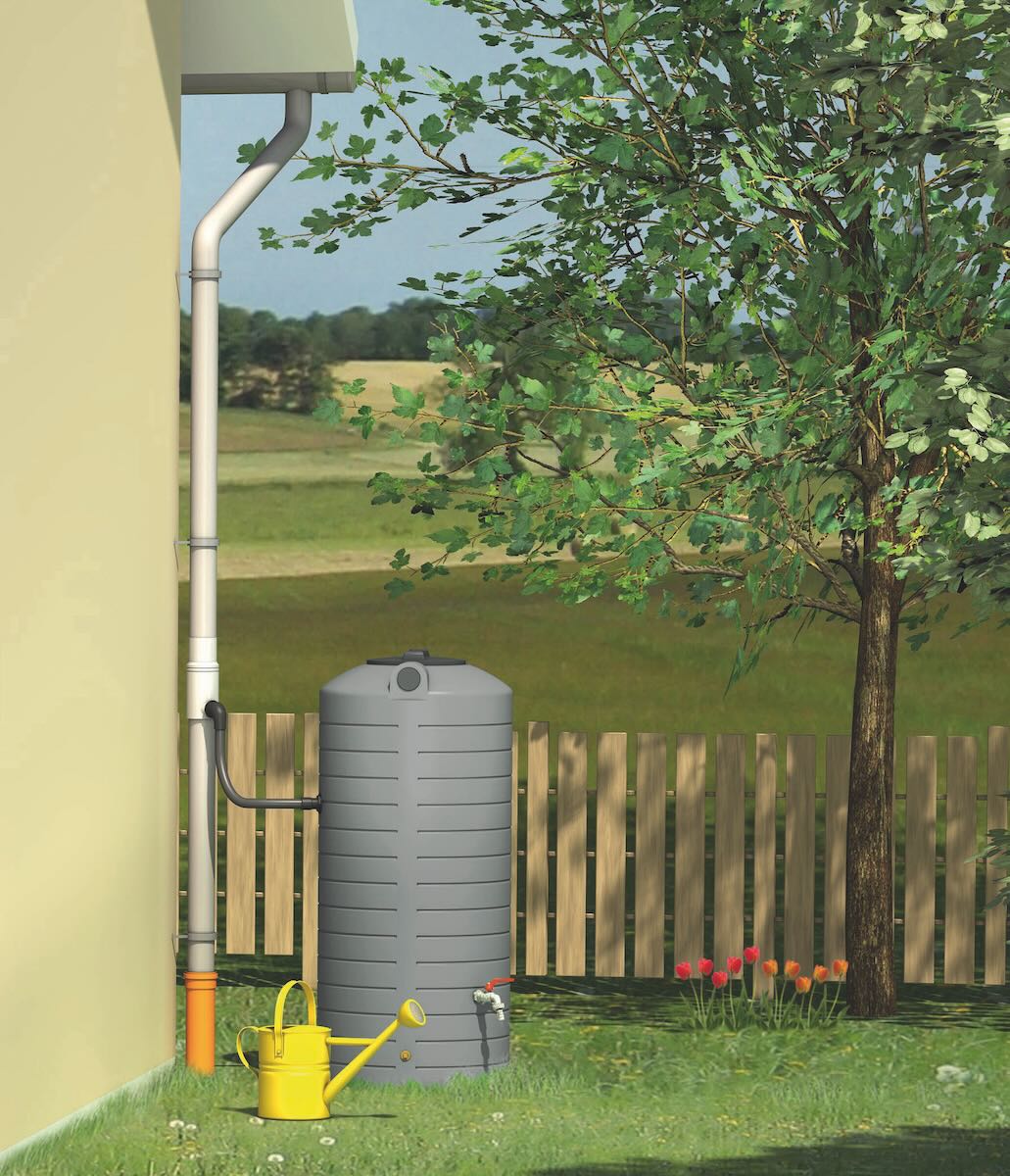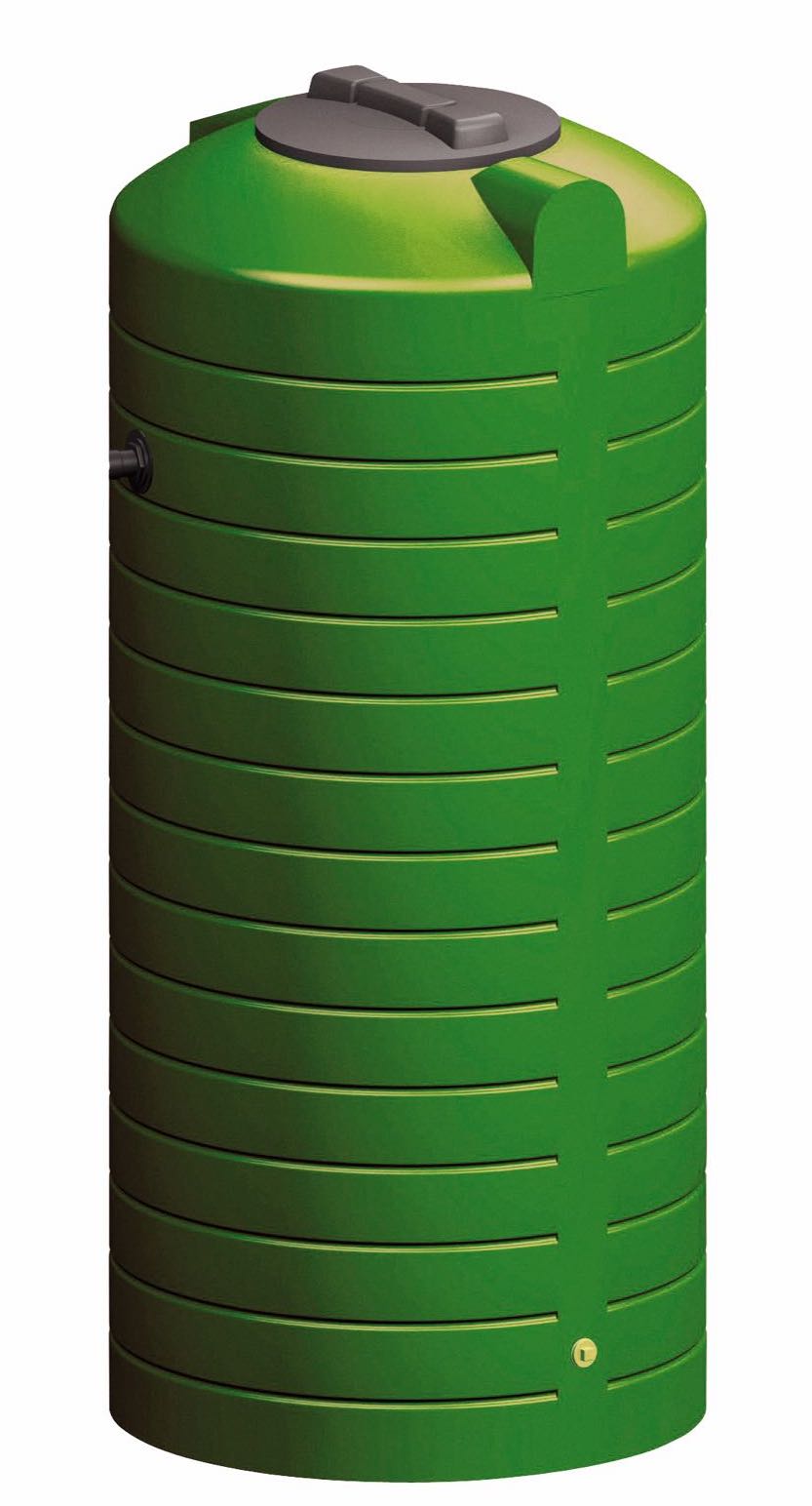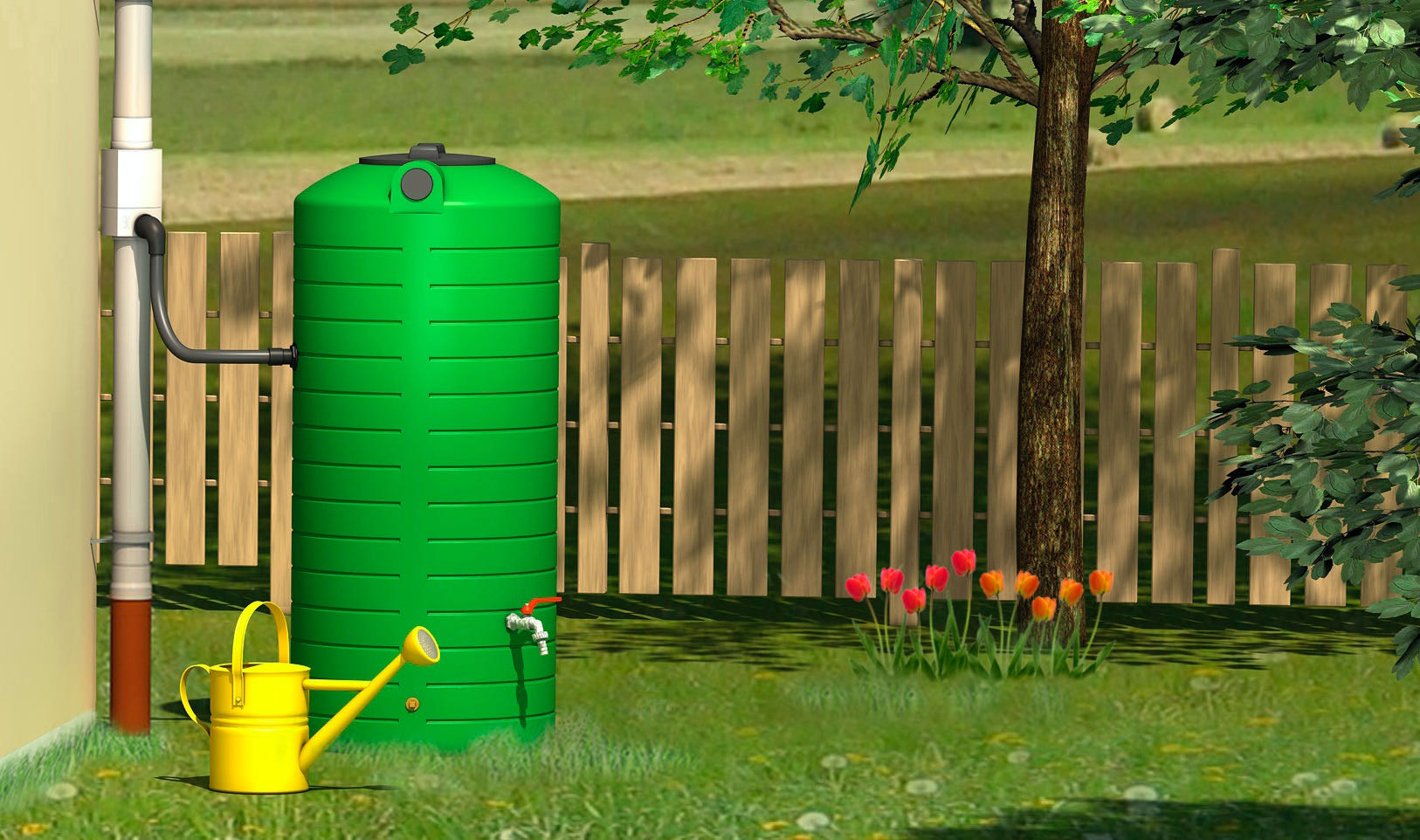Frostproofing the rain barrel
"Water breaks stone" is an English proverb that refers to the power of freezing water to symbolise the power of the small over the strong. However, at temperatures below freezing, water can not only break stone, but also large rain barrels and rain barrels.
The volume of water increases by about 9% when it freezes into ice. For this reason, every above-ground rainwater tank must be frost-proofed if its material cannot withstand this stress. Even the most beautiful rain barrels are of no use if they do not survive the winter.
WISY explains how to keep your existing rain barrel free of ice or what you should bear in mind when buying a new one to make it easier for you to prepare for the next winter and make your rain barrel frost-proof.
Reasons why you should keep your rainwater tank winterproof
Many rainwater catchment tanks run the risk of being destroyed by frost in winter. When they freeze, the stored water increases in size and causes stresses in the material.
Plastics become less elastic with decreasing temperatures and are thus less able to yield to pressure. However, there are differences depending on the type of plastic, more on this below. It is not uncommon for stress cracks to appear on the rain barrel in winter if the material is not designed for them. The cracks are often found
- at the level of the water surface, as water freezes from the top downwards
- or at the plastic outlet tap, as comparatively little water is exposed to the temperatures there.
Although the rain barrel can be covered to protect it from short-term cold, this does not make above-ground rainwater tanks frost-proof in deep winter frost. You should therefore winterproof your rain barrel.
Tips: How to keep your rain barrel frost-proof
Depending on the type of rain barrel, different measures must be taken to protect your rain barrel in winter. Above all, the material and the thickness determine whether the rain barrel is frost-resistant:
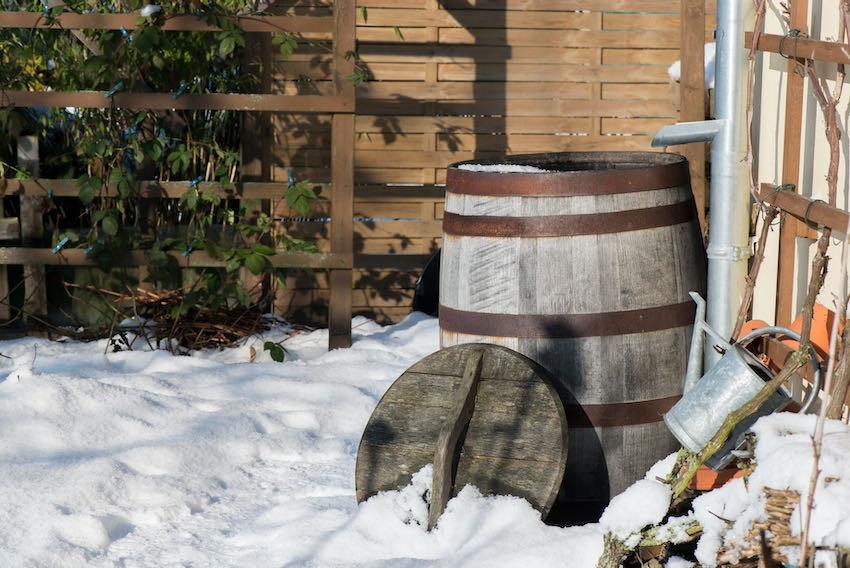
Making a thin-walled rain barrel frost-proof
Thin-walled rain barrels and rain barrels made of polypropylene(PP) offer less elasticity, especially in cold temperatures, and crack more quickly in frost. If you do not want to regularly break the ice layer, the only thing that helps is to empty the rain barrel in good time and thus protect it from frost damage.
The best way to empty the rain barrel is as follows:
- Blind insert for WISY downpipe filter Use the collected rainwater or let it run out via the tap. If available, open the emptying spout in the lower area. Let the container run completely empty, if necessary by carefully tilting it. (Caution, water is heavy!)
- Leave the outlet tap and opening for residual emptying open.
- Disconnect the connection to the downpipe and cover the container so that no new rainwater can flow in. Suitable blind inserts are available for all WISY downpipe filters.
Isn't it easier to winterise a rainwater barrel?
Yes - in fact, it is much easier to winterproof a barrel or rain barrel made of polyethylene (PE) plastic. This material can withstand low temperatures much better than rain barrels made of the above-mentioned polypropylene (PP). A prerequisite for durability is sufficient wall thickness. Only in the case of sensitive connecting hoses in which the water can stand, we recommend disconnecting the connection in winter or interrupting it with a blind insert.
Our frost-resistant Stabilix rain barrel is made of elastic, physiologically harmless and recyclable polyethylene. The container is seamlessly manufactured in one piece with a solid wall thickness. This winterproof rain barrel is so stable that it can freeze completely in winter and thaw out again undamaged in spring. Since you don't have to empty the barrel in autumn, you don't waste precious rain water either and start the gardening season immediately in spring with a full rainwater storage tank. Your collected rainwater is already waiting for you!





